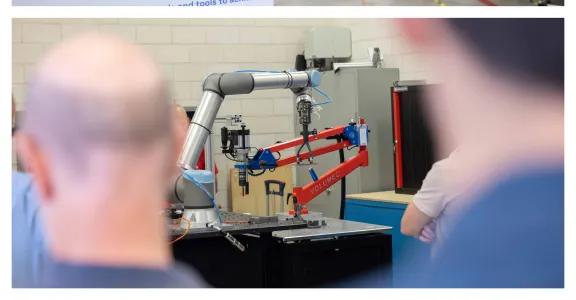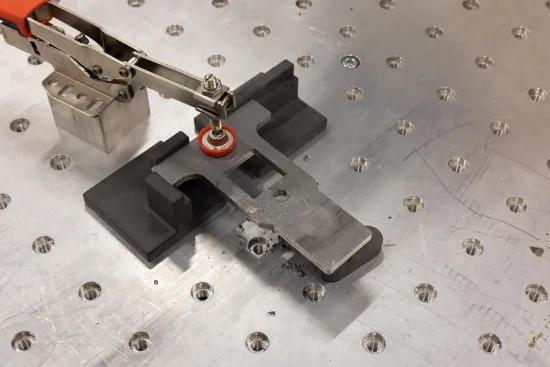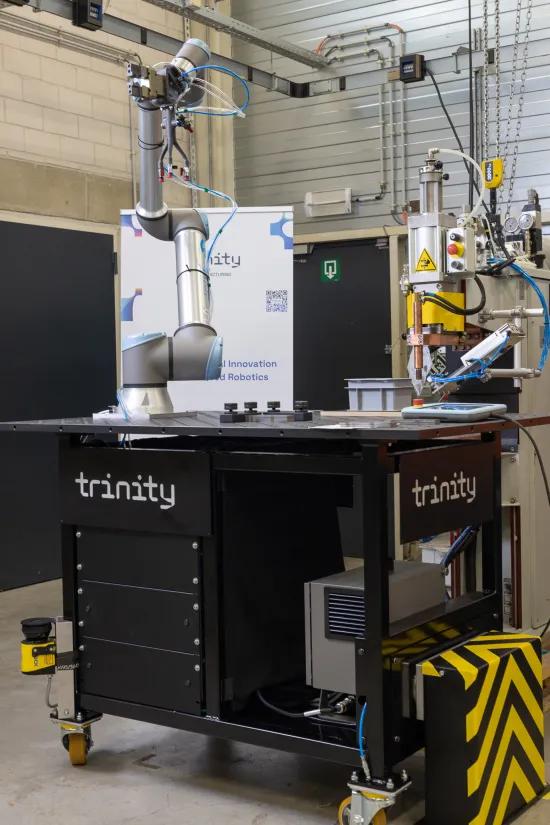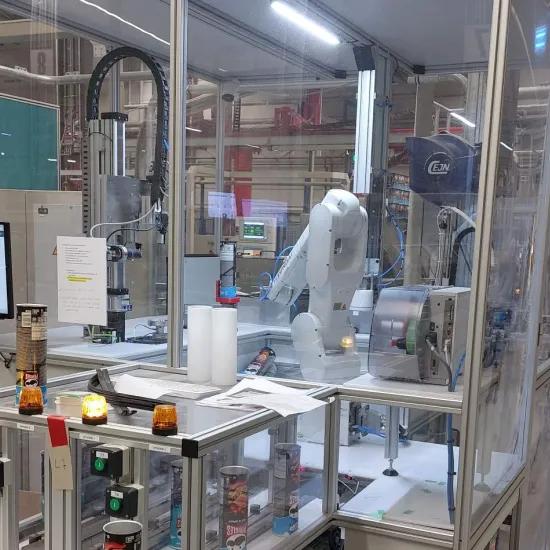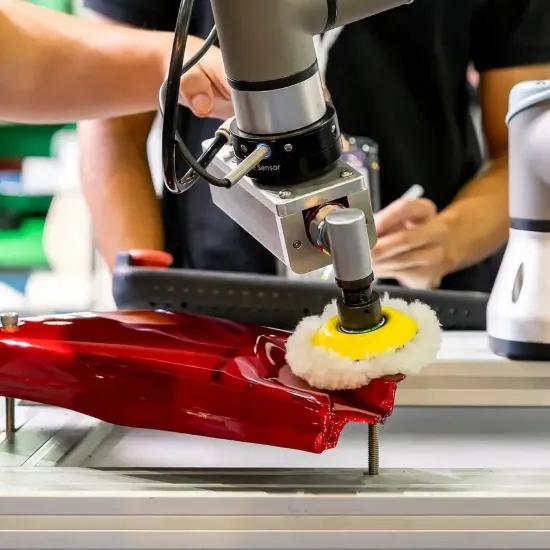The number of industrial applications for cobots continues to grow. However, many SMEs are hesitating to take the plunge, given the unclear ROI, especially within high-mix-low-volume environments. As part of the Trinity RECOPRODAS project, Sirris and Malmar explored the possibilities of using cobots as flexible production assistants.
Increased production complexity requires operator support
Complexity in production has undeniably increased. Customers are expecting high-quality personalised products at the lowest possible price and delivered as quickly as possible. Series are becoming smaller, while variety is steadily increasing (high-mix-low-volume). In addition, finding specialised (technical) staff is becoming more difficult. So, as a manufacturing company, it is important to take some of the burden off the operators. Boring, repetitive and taxing tasks should ideally be taken over by assistive technology, allowing operators to be deployed according to their strengths. While cobots have great potential in this regard, today they are mainly deployed at specific machines or cells, primarily as a low-cost option for automating relatively simple processes. When a large variety of products - often each with different routing - need to be produced, placing cobots on each machine is not an option because of the high investment and low utilisation rates.
Yet there is clear compatibility between the characteristics of cobots (relatively easy to program, flexible deployment, possibility of safe human–robot collaboration etc.) and the challenges faced within high-mix-low-volume contexts. Ideally, cobots should be deployed as flexible production assistants at specific machines or cells at times when they are needed. Control still lies with the operator, deciding which tasks to perform themselves and which tasks should be performed by the cobot.
Addressing specific challenges
To create a true plug-and-produce cobot production assistant, there are a number of specific challenges that need to be tackled. Together with Malmar, these were investigated as part of the RECOPRODAS project within the specific field of metalworking (bending, tapping and spot welding). Several specific challenges were addressed:
- Docking-station with universal I/O connector: Cobot PAs must be quick and easy to position and link to the machine. For the purpose of the project, a connector was devised that uses the Schunk zero point clamping system to physically align the cobot assistant (these systems are also used with CNC machines). This system allows very precise positioning of the cobot PA to the cell. Via an ingeniously designed I/O connector, all necessary (energy) supplies are connected (compressed air, data transmission etc.) and the right program is read in, making it possible to start work relatively quickly. The positioning system and I/O connector were integrated into a docking station that can be fitted to any machine or cell, allowing for true plug-and-produce usability.
- A modular clamping system: A number of products need to be bent, tapped and spot welded. Each of these products needs to be positioned in such a way that the cobot has a reference point to work from. For the RECOPRODAS project, a hole-patterned welding table was fitted with modular stops to allow highly flexible and correct positioning of working parts. When using a new working part, the operator simply needs to reposition the stops..
- A mobile platform: The cobot PA should be easily movable between different machines. To that end, a manually movable platform was developed. The operator is able to move this ‘cart’ and easily dock it to the machine. If required, this platform could also be moved automatically; however, in this particular instance the added cost of an AGV/AMR could not be justified, as the machines would be set up within the same cell (requiring only very small movements).
- A flexible gripper system: Different grippers should be used for gripping different working parts, alignment and loading or unloading. While it would be possible to opt for a gripper magazine and quick-change system, for this particular case, a combined multifunctional gripper with suction cups and fingers was developed. This eliminates the need for a physical gripper change, thereby improving cycle time.
- Low-level (simple) programming: To program the cobot PA, Robotiq’s CoPilot software add-on was used, with the programs built in a modular way from specific subprograms. As a result, programming can still be done ‘online’ via the teach pendant, and thanks to the absence of other software environments (e.g. for offline programming), the level of complexity for the operator/controller is minimised. The CoPilot add-on allows difficult-to-program movements to be easily pre-programmed by guiding the cobot manually. Meanwhile, the displayed path is recorded and then played back within the program. The modular subprograms make it easy to reuse and adapt program blocks for other (new) products.
Besides the above issues, adequate attention was also paid to a number of practical concerns, such as the supply and removal of components and safety, to arrive at a working unit that Malmar could continue operating at its facility in Lithuania.
High interest following demonstration
During the demo day on 6 September, the results of the RECOPRODAS project were presented to the public. Some 20 participants visited Sirris’ application lab in Diepenbeek and exchanged ideas with Sirris experts. A review of this can be viewed hereafter.
Interested? Please get in touch!
